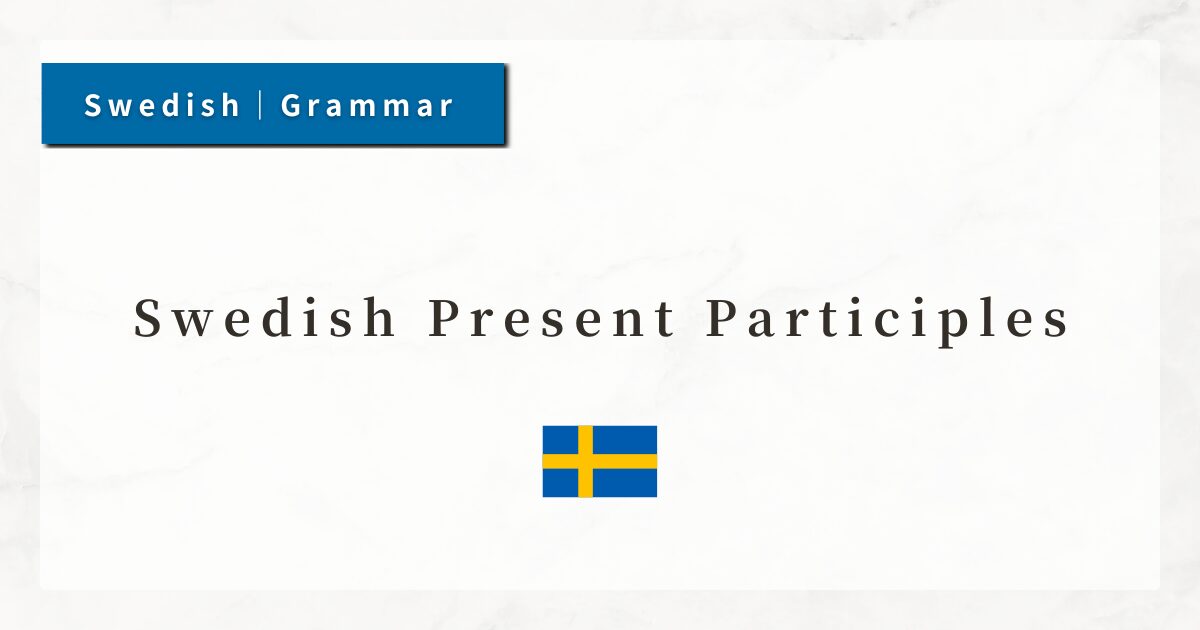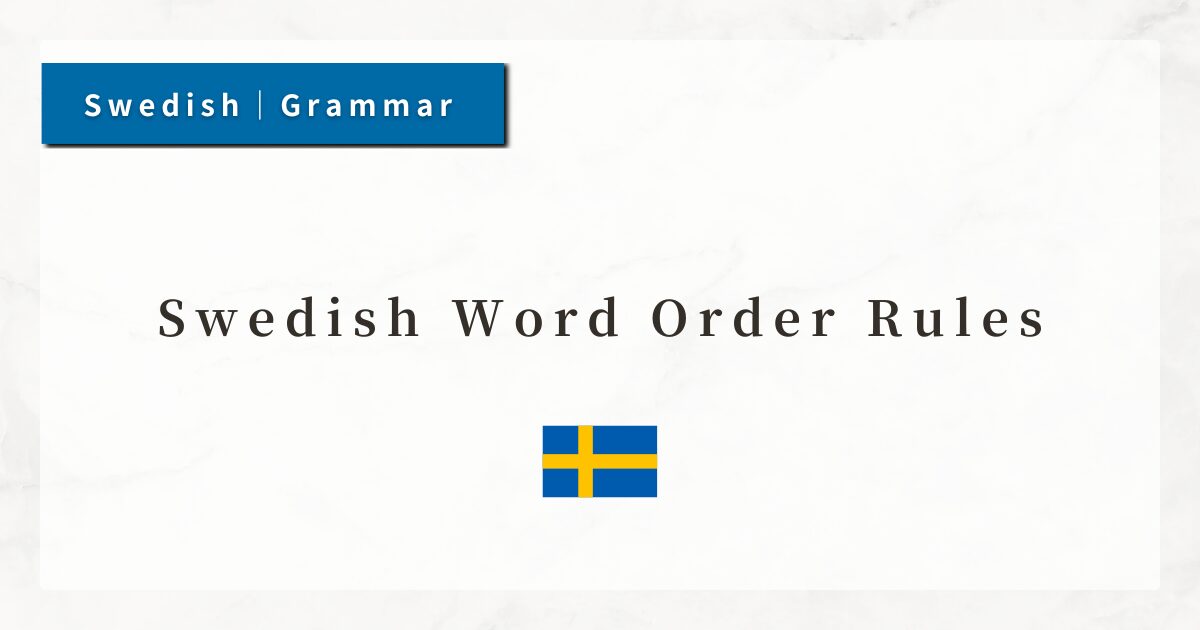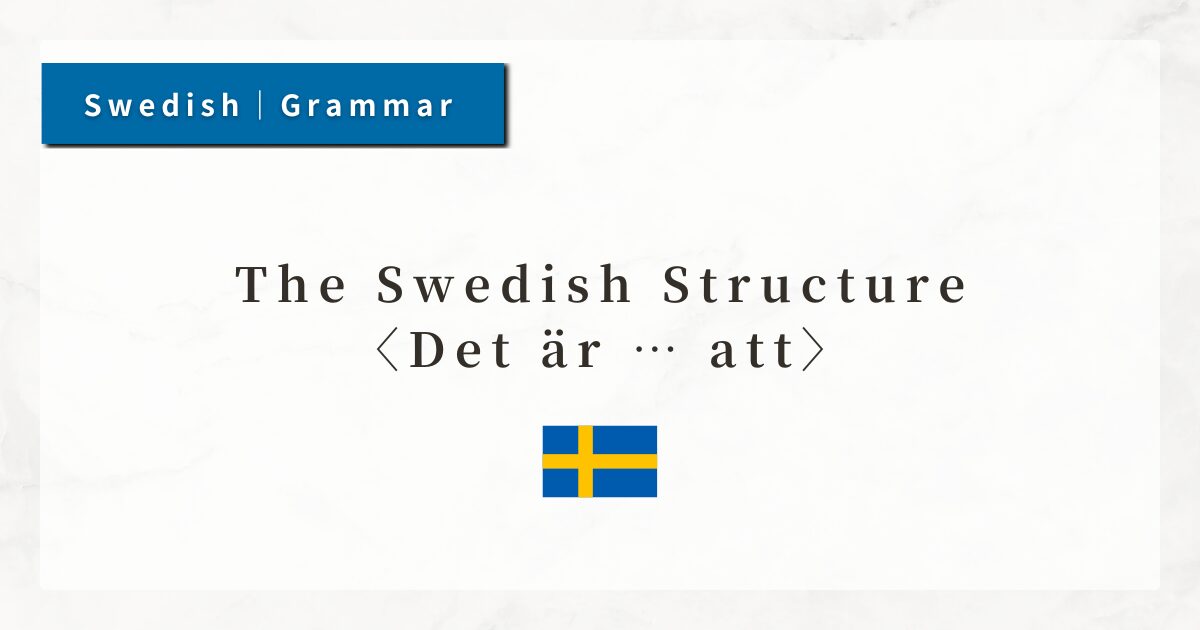#31 Swedish Tenses Compared|Past, Present Perfect, and Past Perfect Explained

In Swedish, there are three main past tenses: the past tense, the present perfect, and the past perfect.
All three describe actions or events that happened in the past, but the choice of tense depends on how the past event relates to the present or to another past event.
In this lesson, I explain the differences and usage of these three tenses with examples.
1. The Three Past Tenses at a Glance
When describing the past in Swedish, you choose among the following three forms:
| Tense | Structure | Usage | Example |
|---|---|---|---|
| Past Tense | Verb in past tense form | Describes a simple event in the past | Jag åt middag. (I ate dinner.) |
| Present Perfect | har + supine | Describes a past event connected to the present | Jag har ätit middag. (I have eaten dinner. [I am full now]) |
| Past Perfect | hade + supine | Describes an event that happened before another past event | Jag hade ätit innan han kom. (I had eaten before he came.) |
All of them narrate “past events,” but you must choose the tense depending on when it happened and how it relates to the present or to another past event.
2. Past Tense: Stating Past Facts
The past tense is used for events or states that occurred at a definite time in the past.
It is commonly used with expressions like “yesterday,” “last week,” or “five years ago.”
- Jag åkte till Stockholm i somras.
(I went to Stockholm this summer.) - Hon bodde i Uppsala för några år sedan.
(She lived in Uppsala a few years ago.) - Vi åt middag klockan sju.
(We ate dinner at seven o’clock.)
The past tense simply describes something in the past. Unlike the present perfect, it does not indicate any connection to the present.
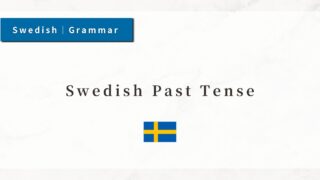
3. Present Perfect: Linking Past to Present
The present perfect is used when a past event is still relevant or connected to the present situation.
It often appears with adverbs like redan (already), ännu (yet), or just (just), and expresses results or experiences that matter in the present.
- Jag har ätit.
(I have eaten. → I am done eating now.) - Har du varit i Sverige?
(Have you been to Sweden?) - Vi har bott här i tio år.
(We have lived here for ten years.)
The present perfect is used for indefinite past events or past events that are still connected to the present.
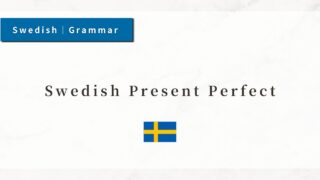
4. Past Perfect: Expressing “the Past Before the Past”
The past perfect is used when there are two past events, and you want to emphasize that one happened before the other.
- Jag hade gått hem innan det började regna.
(I had gone home before it started to rain.) - När vi kom, hade hon redan ätit.
(When we arrived, she had already eaten.)
The past perfect clearly distinguishes “past” from “the past before the past,” making it very useful for expressing a timeline.
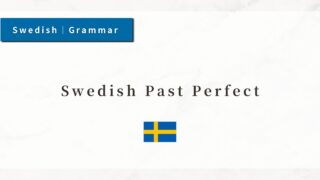
5. Comparing the Tenses
Example with äta (to eat):
| Tense | Example | Translation | Usage |
|---|---|---|---|
| Past Tense | Jag åt. | I ate. | A clear, definite past action |
| Present Perfect | Jag har ätit. | I have eaten (I am full now). | Past action connected to the present |
| Past Perfect | Jag hade ätit. | I had eaten (before something else). | An event prior to another past action |
Even though all three sentences describe the same action (“eating”), the choice of tense depends on the relationship between the action, the present, and other past events.
Another example: traveling
| Usage | Example | Nuance |
|---|---|---|
| Past Tense | Jag reste till Norge förra året. | I traveled to Norway last year. → A simple fact about the past |
| Present Perfect | Jag har rest till Norge flera gånger. | I have traveled to Norway several times. → Expresses repeated experience up to now |
| Past Perfect | Jag hade rest till Norge innan pandemin började. | I had traveled to Norway before the pandemic began. → Expresses an action completed before another past event |
6. Summary
- Past Tense
→ A simple statement of a past fact, often with a definite time. - Present Perfect
→ Describes past events connected to the present (experience, completion, continuation). - Past Perfect
→ Places one past event before another, clarifying sequence.

